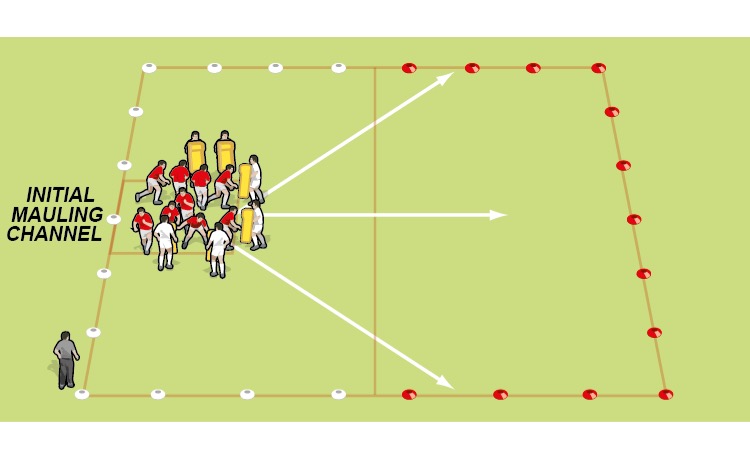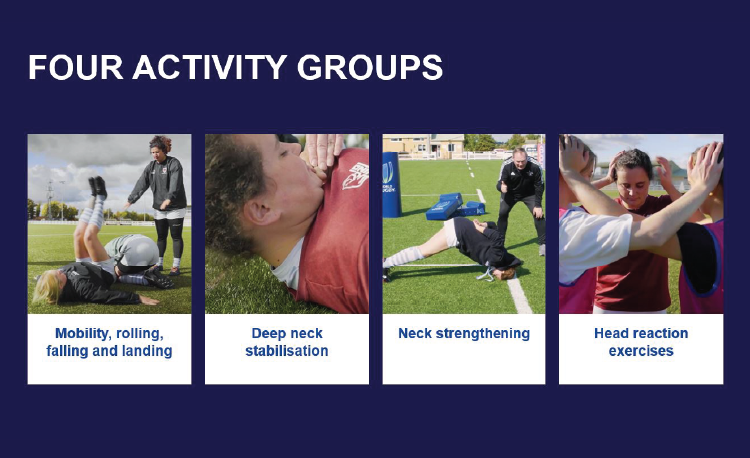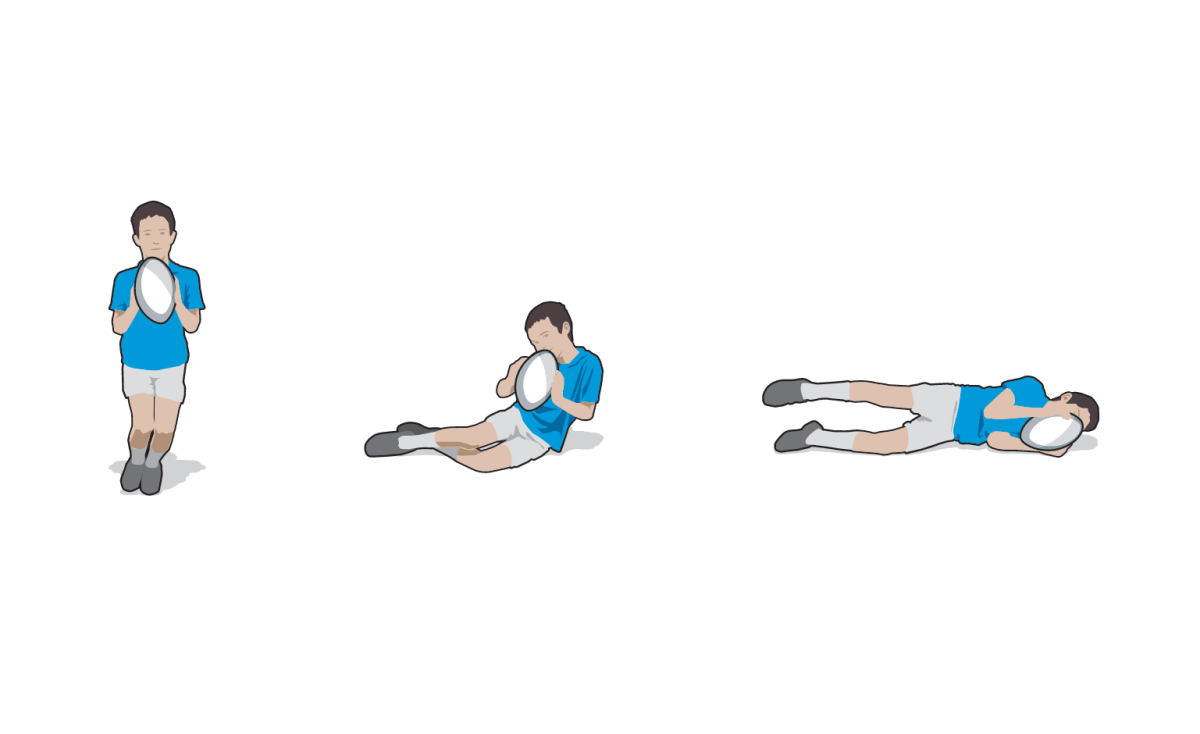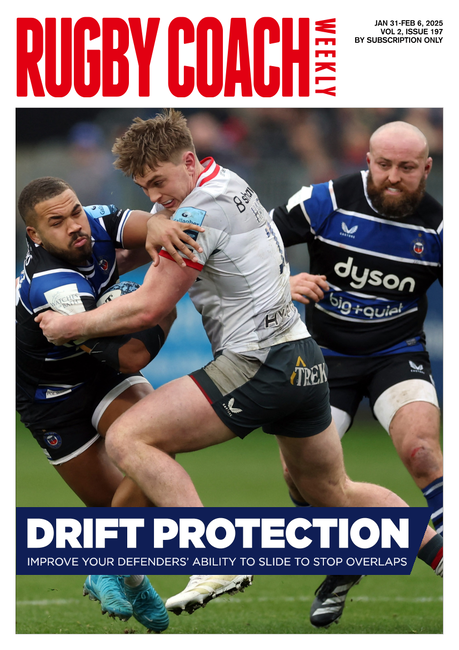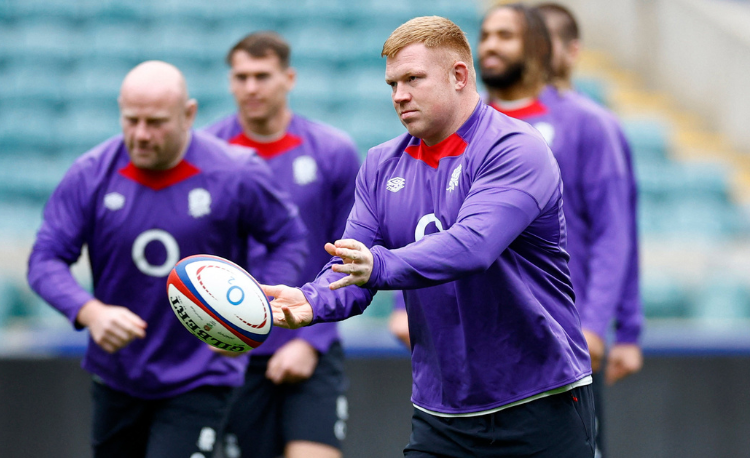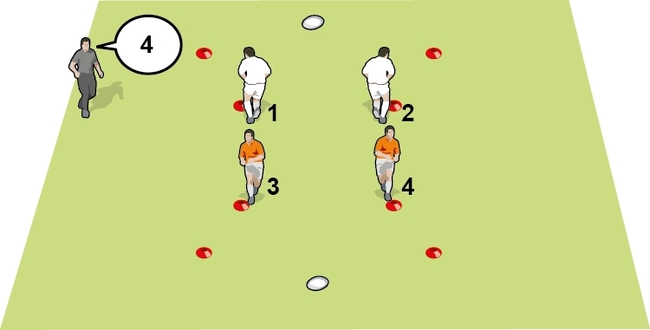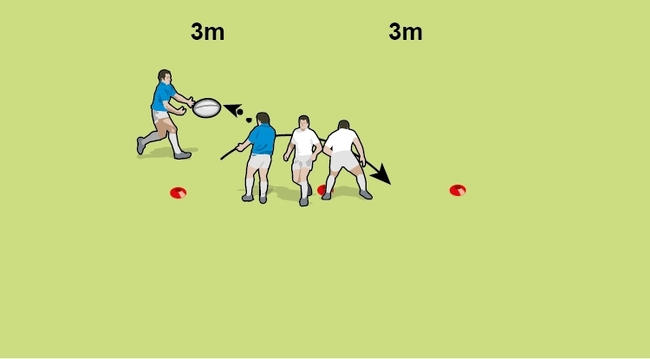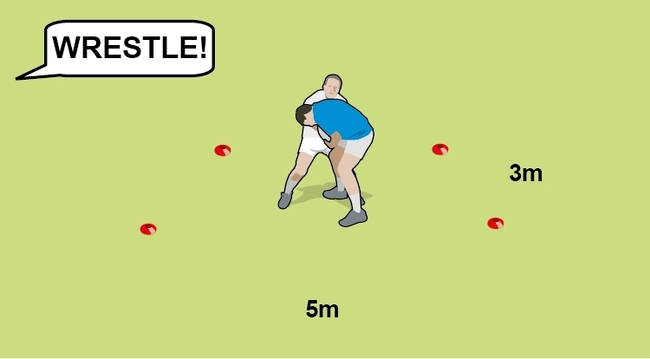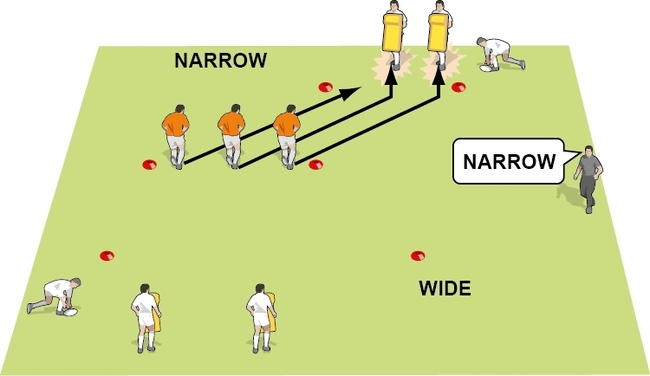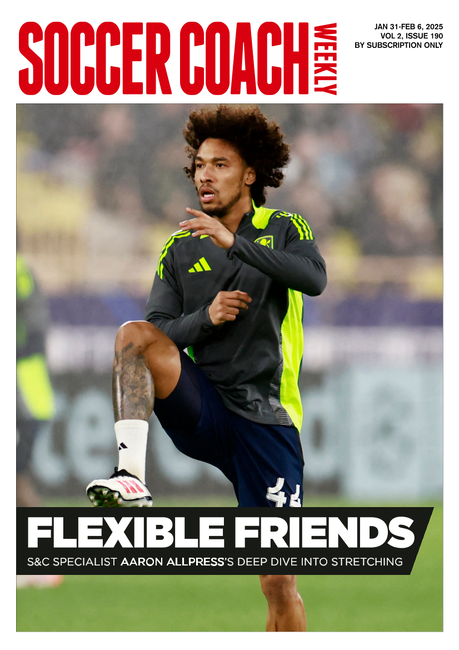Coaching safe and creative ways to fall
Coach learning researcher and rugby coach DR ANNA STODTER explains how to develop contact confidence at a pace that suits the players in front of you.
I was taught to tackle, pretty much, from the side of the pitch in my first game.
I am glad to say that coaching and rugby have moved on since then. But what is the best way to introduce and build confidence in both contact and the tackle?
First, it is important to learn how to fall. The parachute fall is the most common method that’s taught. Let’s break it down and explore why it helps.
How to do a parachute fall
Refer to the illustration below.
The three stages are:
- Keep two hands on the ball. Bend the knees and fall to the side.
- Land first on the side of the knees, then the hips.
- Finally, land on the shoulder.
By falling in this sequence, you spread the impact of the fall across the different parts of the body.
When we land, we need to fall onto our big surfaces. The parachute fall allows us to land on the side of our knees, hips and shoulders.
As per the illustration, a player’s hands are tucked in beside their body and not reaching out.
But this can’t just be practised in week one and then assumed that the players have understood it. Our players should be ’falling’ every week to help them learn how to control their bodies.
"You need to balance experimentation with maintaining safe and effective standards..."
Creative falling
We need to find different ways to creatively fall and land, other than just using parachute techniques.
Clearly, it would be boring to do the same exercise every week and, when applied to ‘real-life’ rugby situations, it’s not always so straightforward.
We also need to recognise that most contact is out of the control of the players involved. Most of the time, they are not trying to fall over.
The World Rugby ’Contact Confident’ resource I put together – based on research and working-group input from Dr Katrina McDonald, Dr Danielle Salmon and Janelle Romanchuk – has lots of examples of how you can manage falling over and landing, or ‘going to ground’ in rugby-speak. So, how creative can you get?
You need to balance experimentation with maintaining safe and effective standards. Not all players want to have something new every week. Novice players, in particular, might need a much slower introduction to novel ideas.
In my research with soccer coaches, I found that they learned new strategies and applied their knowledge through continuously trying things out, adapting and then adopting what works.
This learning process highlights the importance of staying open-minded and tweaking practices to fit your own players.
Related Files
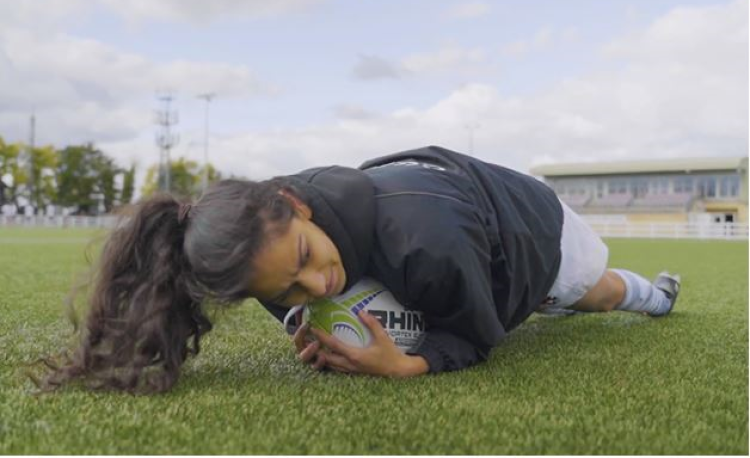
Time, place and pace
Creativity is a privilege of time. If you have limited training time, you have less chance to experiment. Every experiment needs to be tested, reviewed and re-tested.
It also needs to suit the needs of the players. The more you can understand what they are experiencing and how it impacts them as individuals, the more you can tailor your training to match their requirements.
There are two ways that can work well together:
- Watch carefully how the players react in various stages of learning and pressure.
- Use clear, simple instructions, combined with open questioning. You want players to be comfortable giving you feedback, but understand that they aren’t always the experts in good practice. They may say they need more training when their biases of what ’good’ looks like can skew their perceptions.
Being creative with forwards falling
Novice players could go through the various landing exercises, which start in the kneeling position, with the player landing on their forearms and turning their head as they land.
"Watch carefully how the players react in various stages of learning and pressure..."
This progresses to falling with the ball and, then, doing it from a standing position. They could use a tackle pad to kneel or fall onto, and use a team-mate to hold their calves or heels when they are in a kneeling position to replicate the feeling of their legs being held.
In your touch rugby warm-up, if a player is touched, they can perform the perfect forward landing.
In my survey of women in high-performance rugby coaching, the coaches noted that their players responded well to the words "score a try" as a cue for the fall.
If they don’t – for example, if they put their hand out, creating a small surface area, or they lose ground by turning back towards the supporting players before landing – they might lose a life (of three for their team).
For less confident players, the touched ball carrier can go down to their knees and fall forward.
The next stage would be to work hard to be dynamic or snappy, change body shape on the ground and then present the ball back to supporting players. To make it more realistic, the defender who made the touch can do the same without the ball.
KEY PERFORMANCE INDICATORS
- Make a big surface area, land on elbows to fingertips, elbows in
- Turn head
- Shoot feet out behind
- Form plank position
Newsletter Sign Up
Coaches Testimonials

Gerald Kearney, Downtown Las Vegas Soccer Club

Paul Butler, Florida, USA

Rick Shields, Springboro, USA

Tony Green, Pierrefonds Titans, Quebec, Canada
Subscribe Today
Be a more effective, more successful rugby coach
In a recent survey 89% of subscribers said Rugby Coach Weekly makes them more confident, 91% said Rugby Coach Weekly makes them a more effective coach and 93% said Rugby Coach Weekly makes them more inspired.
Get Weekly Inspiration
All the latest techniques and approaches
Rugby Coach Weekly offers proven and easy to use rugby drills, coaching sessions, practice plans, small-sided games, warm-ups, training tips and advice.
We've been at the cutting edge of rugby coaching since we launched in 2005, creating resources for the grassroots youth coach, following best practice from around the world and insights from the professional game.
